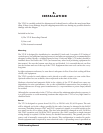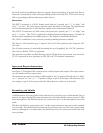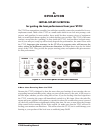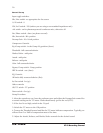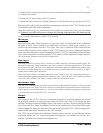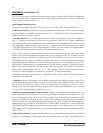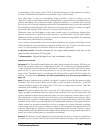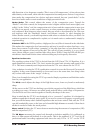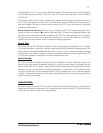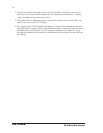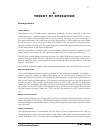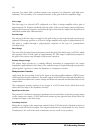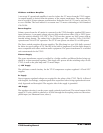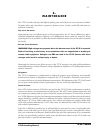
D.W. FEARN
VT-15 Recording Channel
24
add distortion to low frequency sounds. (This is true of all compressors.) A fast release time
adds density to the sound, often with the compression becoming more obvious. Long release
times make the compression less obvious and more natural, but can “punch holes” in the
lower level audio under certain conditions of high percussive levels.
Harder/Softer This control adjusts the nature of the compression curve. Toward the
“Harder” end of the control, the compression ratio is higher and the levels more tightly con-
trolled. At the “Softer” end, the compression ratio is lower and the compression is more gen-
tle. This is not merely a ratio control, however, as other parameters also change as the con-
trol is adjusted. More than any other control, this one needs to be adjusted by ear. This con-
trol interacts with the Threshold, Attack, and Release controls, so after changing the
Softer/Harder control, you should experiment with others to obtain the effect you desire. Its
technical operation is complicated to explain, so it is much easier to understand it simply by
experimenting.
Sidechain HPF In the HPF In position, a high-pass (low cut) filter is inserted in the sidechain.
This makes the compression less bass-sensitive and may be useful on mixes that have a very
heavy bass content. It will reduce “pumping” of the mix from bass or bass drum hits, and
increase the amount of low-end in the mix. The roll-off of bass sensitivity is a very gentle
curve (about 6dB per octave) and has little effect above 150Hz. Using the HPF will also per-
mit shorter Attack and Release times without adding any low-frequency distortion.
Equalization Controls:
The equalizer section of the VT-15 is derived from the D.W. Fearn VT-4 LC Equalizer. It is a
much simplified version of the VT-4, but it retains the same basic circuitry and sound of the
VT-4. The most commonly-used frequencies from the VT-4 were chosen for the VT-15.
A key technique in using the VT-15 equalization controls is to use the Boost and Cut controls
together. It may seem counterintuitive to boost and cut at the same time, but doing it that
way is what adds some of the “magic” of the eq.
There is no formula for setting the VT-15 eq controls. Simply experiment and find what works
best for your application.
The
HF Q control adjusts the shape of the High Boost curve, from very broad to moderately
sharp.
All the curves on the VT-15 are shelving type with the exception of the High Boost, which has
a peaking type curve. All curves are rather gentle and will affect a wide range of frequencies.
Use the Boost and Cut controls together to modify the shape of the curve.
Keep in mind that the VT-15 is not designed to be a “corrective” equalizer. It is designed to
enhance sound that is already pretty good. If you need to correct a frequency response prob-
lem, you will find many other outboard equalizers that are better suited. That said, the VT-15
can add wonderfully power to the bass and a beautiful high shimmer to sounds. Often that is
all that is needed to make the track perfect.
Meter switch Switches the VU meter between monitoring the amount of compression (GR)
and the output level (VU).
The
VU Meter measures the output level through an isolation amplifier. It is calibrated so
that a +4 dBm output will indicate 0 on the meter. This is the standard “0 VU” level for all
professional audio recording equipment built since the early 1970s. “0 VU” on the VT-15




